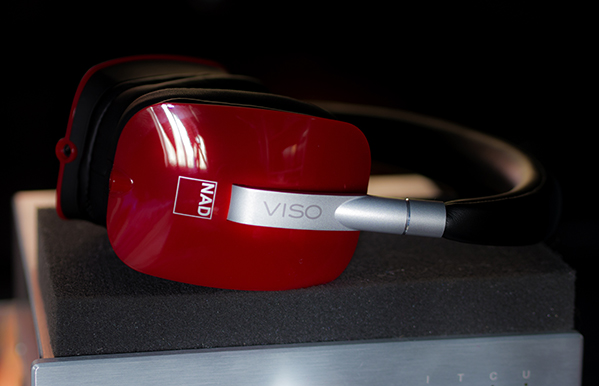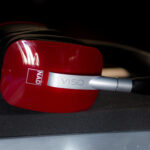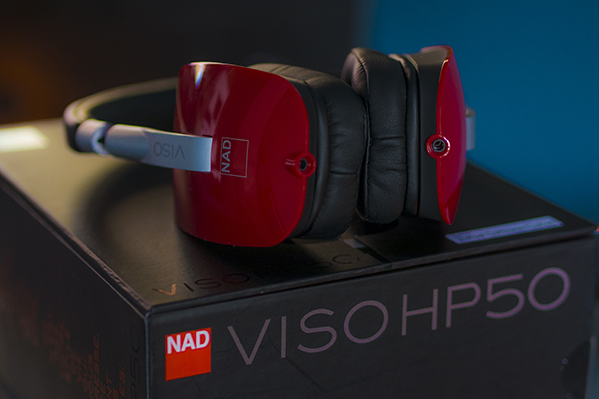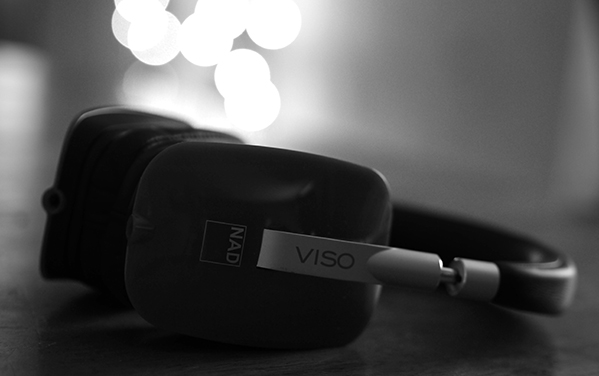In this feature, we review the NAD VISO HP50, which is a new set of efficient 32Ω dynamic driver closed-back portable headphones. They are priced at $249.
Disclaimer: This is a sample sent in exchange for our honest opinion. Headfonics is an independent website with no affiliate links or services. We thank NAD for their support.
To read more about headphones gear previously covered on Headfonics please click here.
Note, this article follows our latest scoring guidelines which you can read up on here.
The NAD VISO HP50 is a game changer in my view, there isn’t really anything quite like it in the closed-back mid-fi world. I have quite a lot to say about this one so sit back, relax and enjoy.
I don’t want to bore you with specification details at the beginning of this review, so I will start out with the conclusion first. That is just how I roll.
The End
The Audio Deities have been good to me this year, seems like every few weeks something comes along that raises the bar. I really didn’t think another closed headphone would come along so soon after my recent AKG K267, a headphone with perhaps the most beautiful tonality I’ve witnessed in a closed headphone.
Unfortunately, the K267 still remains my favorite, but I certainly regard the NAD VISO HP50 as the superior headphone. I have some gripes, but they are all personal preferences beyond the fit and finish aspects of the HP50’s qualities.
My negative points lay completely in the world of subjectivity and preference in tonality, in this case, the HP50 is the polar opposite of the sound type I enjoy. Having said that, this headphone is my pick for the absolute best mid-tier closed-back headphone in recent times.
Walking A Lonely Road
NAD has been making home theater products of various types for some time now, so it’s clear that they get Hi-Fi audio. Making their first blind leap into the headphone world, the HP50 was designed with hopes of accurate recreation of what an actual speaker set up tends to physically sound like.
Your ears can tell the difference right away between the best headphones like the Sennheiser Orpheus and my $300 Audio Engine A5 speakers: It’s all about sound location and sound wave immersion.
No headphones get it right and it only sounds goosebump-worthy in realism on the best headphones in the world with the best and truest, most well-recorded tracks imaginable. Without that, it’s just going to sound like headphones, but really nice headphones at that. I think NAD partially succeeded and aimed at the correct target, the headphone sounds pretty damned great.
I prefer high immersion, a quality you cannot get with a 2.1 stereo speaker setup. That sound will always sound like it is X-distance away from you, where as my JH16 Pro Custom Inner Earbuds provide a ton more intimacy and immersive qualities than any 2.1 speaker setup I’ve ever heard..and I’ve tested and experienced some 2.1 setups that cost more money than my house.
In this regard, the NAD HP50 still sounds like headphones of course, but it’s greatest qualities are found elsewhere and outside the physical locale of the music or track feed.
Full speaker systems set up around me in a listening chair would be the only way to achieve highly intimate sound in a speaker setup in my opinion, no matter what you do the track will always sound like it is being emitted from those speakers sitting out in front of you.
This is why I am a headphone guy and moved out of the speaker thing years ago. I prefer the highly forward sound that is enveloping, most speaker setups cannot achieve this type of sound.
Sound Impressions
The Lonely Road I speak of here is one of absolute and total neutrality. The HP50 is dry as a bone and dead neutral. I mean…shockingly flat.
I thought the Sony MA900 and similar headphones were neutral and dry, but this HP50 takes the cake. It is incredibly flat sounding and linear. There in lay the problem for me personally, but most I know consider this presentation type a happy hour party and something highly desired and wanted for many years. Wishes received for most, but not for me.
It is very hard to enjoy these headphones for most of my music, but damned if it isn’t exceptionally clear and spacious. This HP50 is a Classical and Acoustic masterpiece. Studio Engineers should be pressing that Buy It Now button before continuing to read this review.
The Lows
Despite being so linear sounding with regard to the physical amounts of bass, mids, and upper-end frequencies, the bass on the HP50 is moderately responsive.
Still not as responsive as my AKG K267, but it is a solid performer when it comes to boosting your music low-end via some EQ. The quantity on a flat EQ setting is more than plentiful and never overbearing, which is a fantastic thing and not at all common with headphones of this price tier.
Drummers who need a good monitor while practicing should be eyeballing this set right about now. It is tonally balanced and on my setup is void of lushness, vibrancy, and texture.
That might sound like a bad thing, but it is in fact highly desirable to musicians and sound editors. This headphone seems best suited for classical or acoustic performances, as the bass and the low E string on guitars really have a fantastic decay.
My V-Moda M100 and AKG K267 have a serious problem with this realistic decay factor or that natural reverb effect with some instruments, they seem to cut out too soon and do not provide the subtle nuances that the HP50 provides in that regard.
You can feel the string reverberate longer than the other closed-backs in this price tier. Seems more realistic in those genres but really doesn’t seem at all tailored for anything fast-paced, sure the
Bass is there and it’s plentiful and never harsh in the slightest, but the tonality needs a lot of work and I think the cheaper K267 and even the Sennheiser Momentum have more interesting bass, despite being a bit less clear in comparison.
A flat response isn’t always good, I find it highly unmusical, but ridiculously clear and completely unbiased. Studio Engineers are going to love it. The low end is never fatiguing and I feel fine after a solid hour of listening to harsh dubstep and R&B.
The Mids
The HP50 is surprisingly not intimate and is actually more set up like a Beyerdynamic or something similar with the mids. It’s not as pushed back or V-shaped as a typical Sennheiser sound, but it’s nowhere near as close up as my JH16 for example.
I call this setup presentation moderately forward, and moderately relaxed. This sound was specifically selected to recreate the sound a speaker setup will pipe into a room and it definitely sounds similar, this “locale” is right on the money.
Don’t confuse this as V-shaped, everything in the stereo image is located on a linear plane of existence, and neither of the three primary frequency areas is more prominent than the other two. Jazz, rock, and similar genres take a huge nose dive in engaging qualities.
With a physical presentation like this, nothing stands out and as a result no one genre or type of track sounds best when it comes to the midrange.
Foward midrange headphones tend to sound best with intimate vocal recordings, HD800-ish sound stages sound great with classical and the yummy prominent low end of the Audeze’s tend to sound fantastic with tracks with some weight on the bottom.
In this case, the HP50 seems best suited for classical due to the excellent staging experience in general. Seems to be more of a genre master since nothing really sticks out and the soundscape response is as flat as can be.
The Top End
Just like the Red Wine RWAK120, the HP50 shares the same dry upper end that remains exceptionally clear. It is far from sparkling, shimmering, and glistening in the sun, instead opting for an eye-popping flat experience.
There is quite a difference in styling against the AKG K267, which again has my favorite upper end of any $300 and under headphones of any type.
The latter is bright but controlled, sparkly and shimmering, almost glistening in the sun where as the HP50’s upper end for the most part is far less bright and unwilling to glisten with screaming guitars or violins, cymbal crashes, and even mechanical riffs in Dubstep.
I was actually unable to get sibilance out of this headphone in most cases, it took seriously and notoriously sibilant music tracks to sound hissy, and even then it was actually more tolerable of an experience with those tracks than I’ve had in many years.
Pretty much only my JH16 can handle those tracks without sounding like my ex-girlfriend is stabbing me in the ear with an ice pick. I praise the upper end of this headphone for what it is, but I do not enjoy it.
Violins, guitars, horns, and pretty much anything regarded as “the upper area” sounds incredibly flat. But, that is how most of the expensive speakers sound anyway in my experience, so I consider it a job well done with regard to what they were aiming for.
Stereo Image and Multimedia
Well, this was really unexpected and a treat for me as a sound-stage freak. I love the vast, open, light, and airy sound and this HP50 seriously delivers on that.
The presentation in the stereo imaging width is very well defined and set up, with solid height, and good layering in the depth of the image itself. Overall, the headphone is one of the most spacious and wide close-back pairs of headphones I’ve ever heard. It deserves its the spot right next to the V-Moda M-100 and similar closed-back headphones regarded for excellent stereo image width.
Depth of field on the HP50 ( or that reach out and touch the artist realism ) is very nice, but not the best in the closed back sub $300 price tier. I think that title goes to the AKG K267 to my ears, and due to the highly forward nature of the midrange of that AKG, it tends to sound much more immersive, more profound, and more layered with regard to where the artist is located.
However, that is only true with the midrange, I find that high hats and drums hard plucks of strings, and sudden and fast musical instruments appearing suddenly tend to sound much better and more realistically placed in the HP50 than most other headphones of any type in the $300 and under crowd.
Another fan favorite and solid performer in this area is the Sony MA900, which sounds noticeably more harsh and bright on the highs, but also less realistic. The HP50 outperforms most other headphones in this tier in the slam and decay realism.
I’m a musician, I don’t play drums well but I do play guitar and I can safely say that monitoring live instruments with this headphone is great and has been the go to reference headphone in my arsenal since I received it.
Comfort
Ok, I have to ask. What the heck is up with this headband design? This is a pet peeve of mine and coming off the beautifully comfy and properly executed headband design of the AKG K267, I really have no idea what is going on with the HP50.
It is really uncharacteristic of a portable headphone of this size, offering a shape that is the least conforming to a human head that I’ve worn lately. This design gets more silly each time I look at myself in the mirror or when my family looks at me while I wear it. I can almost telepathically hear their mumbles.
I would like NAD to revise the HP50 headband immediately and take a look at the AKG K267 and how that is designed, which again is the best and most comfortable and practical design in a headband I can think of at the moment.
This HP50 is not comfortable to wear for me on the top of my head, I have a red mark, on the top of my head, every time I wear the headphone and take it off. ( Yes, I shave my head ) Having said that, I think the earpads are very comfortable and rest nicely, but once again are too small for the majority.
Design
Almost every review I’ve read mentioned small pads and I thought nothing of it until I first put them on. They are indeed circumaural, but they definitely need to be plusher at the very least to accommodate the strange and unpractical headband design. If it can’t be more plush and padded, it needs to be larger in general.
The earcups come in a red, black, or white option and are made of plastic, but the headband seems a solid aluminum-type material with very nice leather padding. The headphone seals very well and I enjoy the satisfying air pocket POP that occurs when I remove the headphone from my ears too quickly.
I realize the angled approach of the shape of the headband was intended for a proper seal with the earpads, but I think it is too odd looking and cumbersome for me. Purely subjective on that, but styling points are important to me as well as sound.
I don’t want to look like a satellite dish. I’m very happy with the build quality, it seems rock solid everywhere but the back plate of the earcups, which are a bit odd and out of place with the solid and rigid feel of the rest of the headphone.
Packaging
The headphone comes with a cool mesh accessory holding box, as well as a large soft zipper case, two cables ( one for Apple products and one typicals flat 3.5mm to 3.5mm cable ) an airplane adapter, and a belt clip.
Pretty neat actually, I love being able to swap sides on the earcups with the cable depending on what I am doing or where the source is. I tend to use the left side when I am on the go, but my source and amp are on my right side when I am at home so having that option to freely remove the cable and reconnect to the opposite ear cup is a god send.
Our Verdict
I regard this headphone as the best closed-back $300 and under headphone of recent times. I think it is superior in sonic quality to the likes of the Momentum, M-100, and the Denon D-2000, but the HP50 is also vastly inferior in musicality.
This is not a musical headphone to me and seems setup for those who either prefer this type of flat response ( there are a lot of audiophiles who like this ) or studio engineers who need a solid pair of monitors.
Studios, in general, are going to love the Nad HP50 and right now I cannot think of a single closed-back sub $300 set that even remotely came close to the overall usefulness of this headphone. It’s one of those well-rounded headphones with no real weaknesses.
Nad HP50 Technical Specifications
- Frequency Response 20Hz – 20,000Hz +/- 1.5dB, -3dB @ 15Hz
- THD <0.25%
- Max Input Power 30mW
- Imp 32 Ohms







